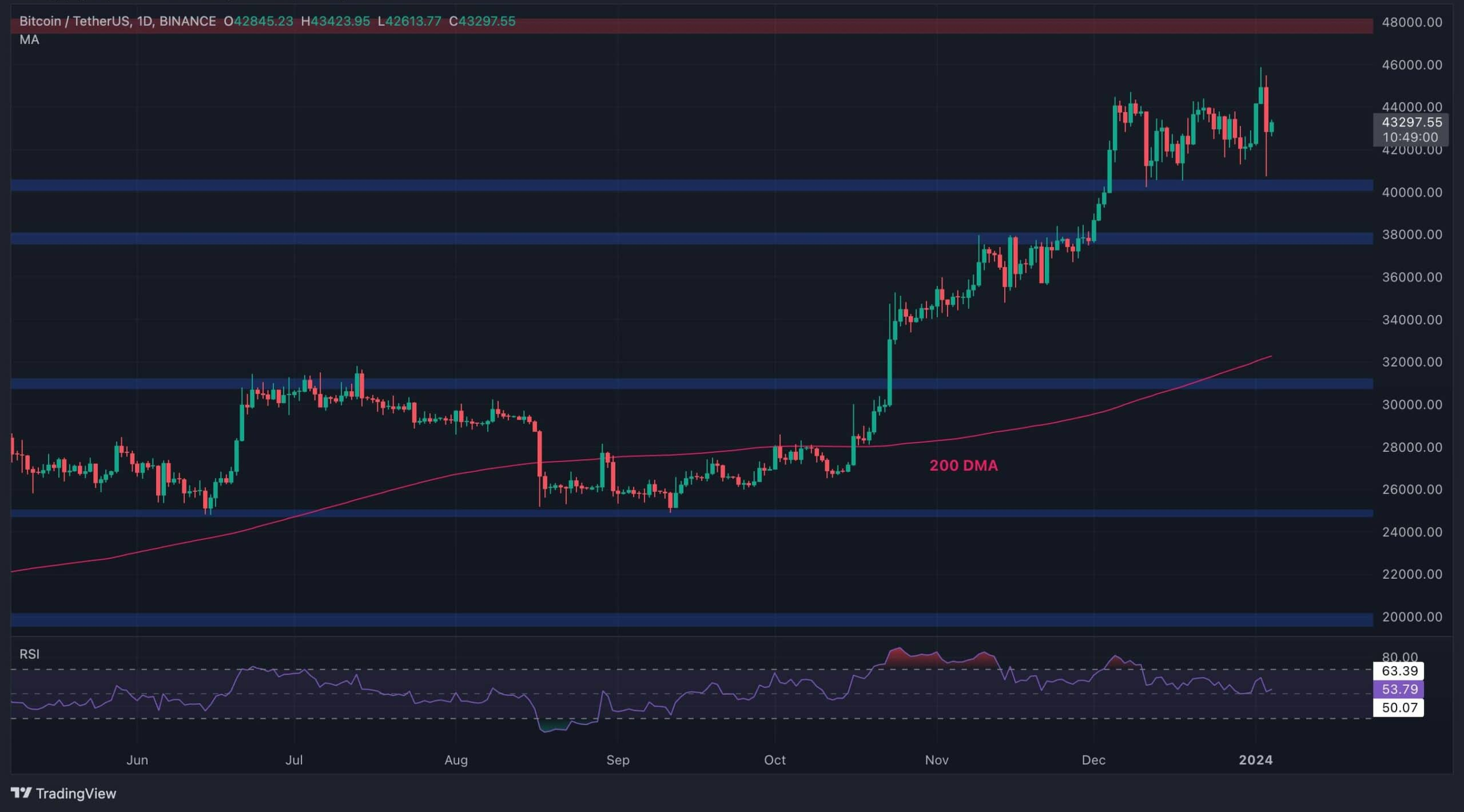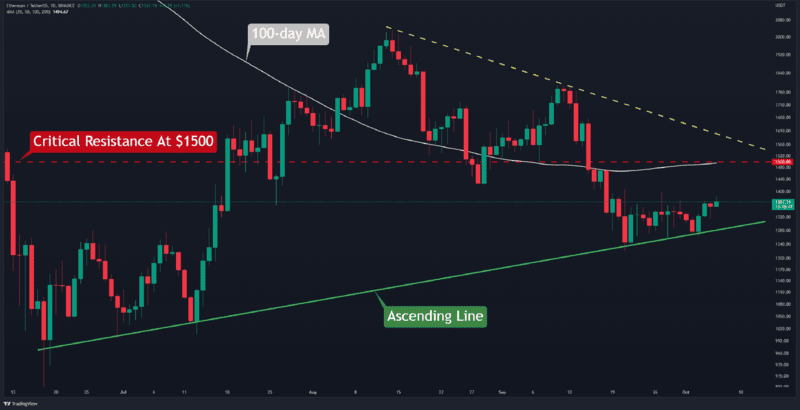
Bitcoin’s price experienced a significant drop yesterday, fluctuating by over 10% in just 24 hours. While it has not yet broken below any critical support levels, analyzing the cause of this movement and its implications for the market is crucial as yesterday’s crash provides valuable technical insights.
The Daily Chart
On the daily chart, Bitcoin has consistently formed higher highs and lows for several months, recently surpassing the $40K mark again. The bullish trend gained significant momentum following a break above the 200-day moving average. However, Bitcoin is now trading well above this moving average, which is situated around the $32K level. This substantial distance from the moving average indicates potential overvaluation.
Yesterday’s drop may signal the start of a deeper pullback toward the 200-day moving average in the short term. For this pullback to materialize, the $40K level must first be broken; otherwise, a continuation of the bullish trend remains likely.
The 4-Hour Chart
The 4-hour chart provides further context, highlighting the cause behind yesterday’s drop. After consolidating between $40K and $45K for nearly a month, Bitcoin’s price broke out above this range earlier this week.
However, the Relative Strength Index (RSI) signaled an overbought condition, and the subsequent drop indicated that the breakout was a false move. The price is currently testing short-term resistance at around $43,300. If it fails to reclaim this level, a drop toward $40K seems likely. The direction of Bitcoin’s short-term trend will depend on its reaction to the $40K support zone.
Bitcoin Funding Rates
Bitcoin’s recovery after the December 2022 drop to $15K has been remarkable. The price has risen steadily, reaching above $40K again. This shift in the market trend has attracted investors and traders, particularly in the perpetual futures market.
Bitcoin’s funding rates are a crucial metric for assessing sentiment in the futures market. Positive funding rates indicate bullish sentiment, while negative values suggest bearish conditions. During the recent rally, funding rates spiked significantly, reflecting strong optimism among investors. However, yesterday’s sharp drop was a result of long liquidation cascades, triggered by the high funding rates.
The funding rates are now more balanced, which is a positive sign. The futures market is no longer overheated, paving the way for a more sustainable bullish trend in the coming months, assuming no drastic changes occur.



